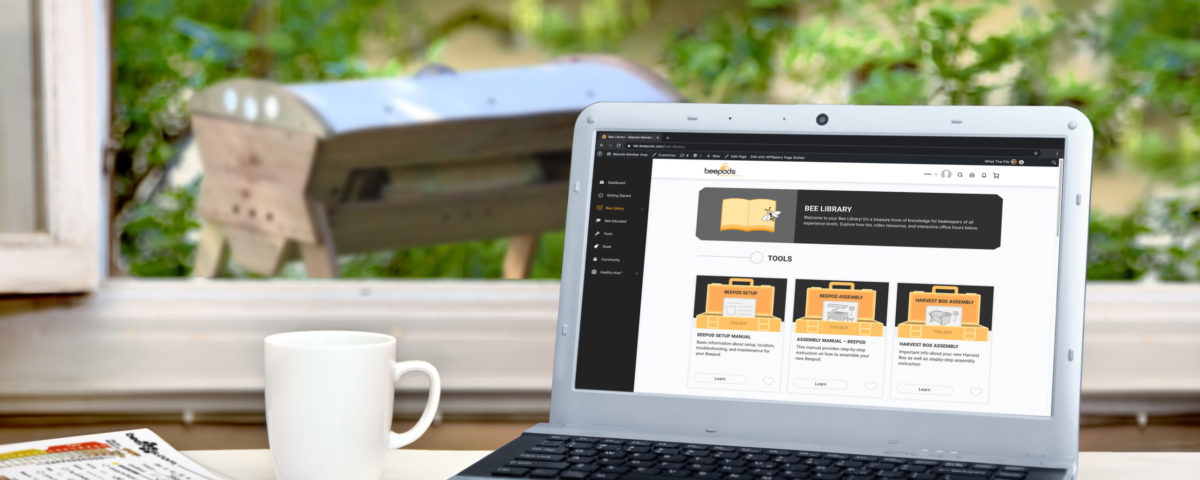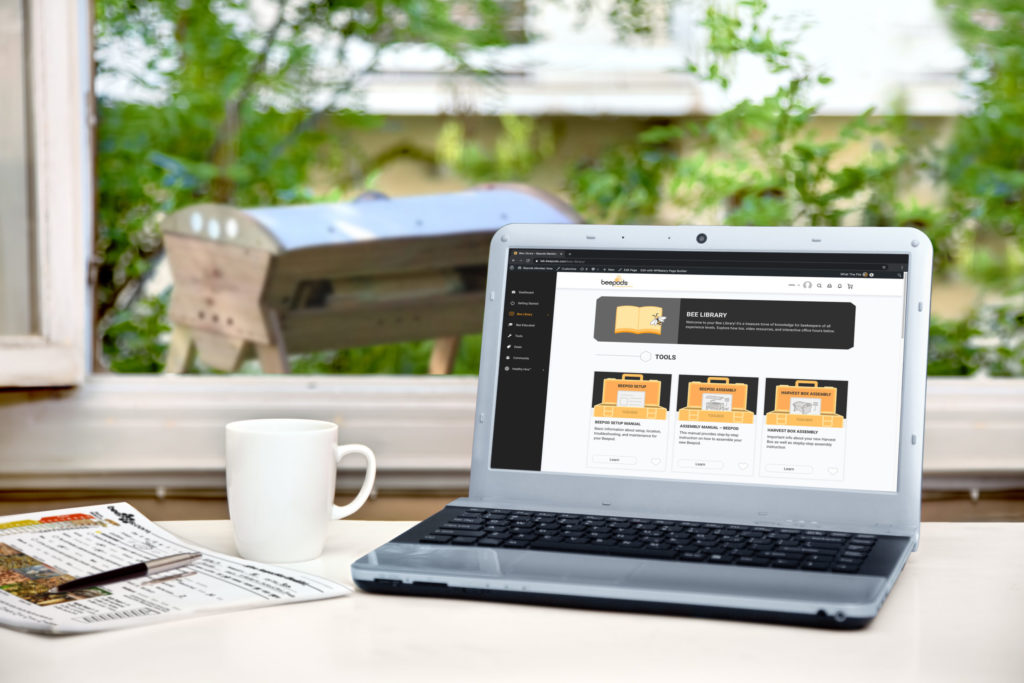- All-In-One Beekeeping for the Bees
- +1-608-728-8233
- info@beepods.com
Beepods Lab: A Look Inside

Silver laptop sitting on desk with papers and a cup of coffee. Selective focus on the computer screen.

So, you have a Beepod, but you want to learn more about bees before the school year starts. Or remotely starts. Good plan. Come with me. I want to take you inside Beepods Lab. When it comes to learning about sustainable beekeeping, this is your one-stop-shop. In just one season of using our resources, you will become a sustainable, data-driven beekeeper. C’mon, step inside.
Does anyone see the power button? Good, press that. This is how you get started in Beepods Lab. We know that beekeeping can be challenging, so we’ve organized the important information for you. We begin by telling you where to place your Beepod, how to assemble it (only 13 steps and the last one involves peeling plastic off the window), how to maintain it, and what to do if you have problems. Checklists? We got ‘em. Hive inspection forms? You bet. We even provide a varroa mite treatment toolkit and directions for assembling a Beepods Winterizing Kit.

By now you’ve certainly come across a Little Free Library. But what about a little bee library? No matter what your level of expertise, the Beepods library in the Lab provides a wealth of helpful information. We have courses you can take to learn about beekeeping, balm and salve making, and sustainable gardening. I’m going to suggest that you start with Beekeeping Level One. In that course, you will find six hours of instruction divided over 16 lessons. We will track your progress and show how many steps you have remaining. Similar to our courses, our execution plans will guide you in specific processes, such as setting up your bee yard. Once you complete the plan, take the quiz to test your knowledge.

If you think you smell bread baking, those are just the fresh lesson plans being added to our Bee Educated section of Beepods Lab. Since my last blog was about bee skills like the waggle dance, I find myself looking at “The Waggle Dance Game” for grades K-3. Imagine your students pretending to be scout bees and trying to tell their classmates where a flower is located using only a waggle dance. Very fun! High school students will enjoy the “How a Bee Sees the World” lesson. The lesson also explains how you can place a male bee (no stinger) in a bug viewer to observe or place a bar of comb in a Beepods Bee Viewer to investigate.

Do you hear that noise in the back of Beepods Lab? Let’s go check that out. It’s the community section! On your left is the Keeper’s Corner, a 71-member private community for Beepods keepers to ask their questions and tell their stories. The smaller group near them with the coffee cups in their hands is the Bee Educated Facebook group. This is where educators come together to support each other with natural beekeeping techniques. If you hear some funny accents, those are the groups from various regions across the United States. If you can’t decide which group to join, sign up for a mentor, and we will set you up. You can also choose to be a mentor for a new-bee.

Hey, don’t touch that! Just kidding. That’s the Healthy Hive™ Management Software. This is where beekeepers enter their data to keep track of the health of their hives. Here you’ll also find a cool online form for entering data from your hive inspection. This is a great way to have your students practice collecting and analyzing data. Beepods will also use your data to help you assess the health of your bees.
OK, c’mon, it’s time to go. Bee sure to close the door on your way out. And don’t forget to renew your Beepods membership before you leave. See you in the Lab!
Bill Polacheck
Latest posts by Bill Polacheck (see all)
- Level Up with a Beekeeping Course - September 15, 2020
- Beepods Harvest Box: Helping Your Bees Survive the Winter - September 8, 2020
- Simple Ways You Can Communicate Like a Bee - September 1, 2020




